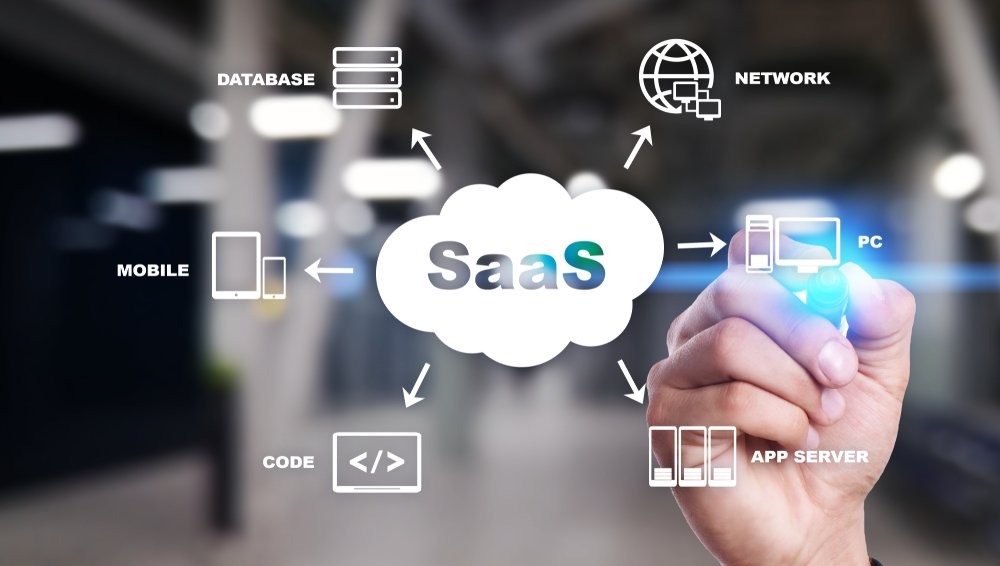Ever since Salesforce first popularised the concept over fifteen years ago, most of us have grown comfortable with the concept of SaaS – Software as a Service.
Software applications served up to us via a web browser, free of the fuss of downloads, installation and updates that characterised traditional software deployment.
The development of cloud computing and DevOps technologies has allowed SaaS to rapidly become the default option for software deployment in the past decade.
Post Contents
What Is Micro-SaaS and Should You Get Involved?

However, recently a new concept has begun to emerge that takes the idea of SaaS and democratises it.
Micro-SaaS.
A micro-SaaS is a niche product serving a very small target market and run by an individual or small team, perhaps on a part-time basis, without outside investment.
The proliferation of sites like WordPress, Squarespace and other website builders mean that it is easier than ever to give your SaaS side-venture a professional look and image.
And the idea behind micro-SaaS has been given a major impetus recently by the parallel development of two technological innovations – no-code tools and generative AI.
Since ChatGPT took the world by storm at the end of 2022, the potential of generative AI has been crystal clear.
For a small business, the ability to create large amounts of quality content at virtually no cost could be transformative.
It means that marketing and distribution, often the single largest cost for a small, unknown startup, may become exponentially easier and cheaper.
Likewise, the combination of Generative AI and no-code tools mean that software engineering, the other half of the SaaS cost equation, should become far more accessible for non-technical founders.
Tools such as OpenAI’s Codex and Github’s Co-Pilot mean that in many instances, high quality code in variety of languages can be generated by a simple prompt.
It is worth noting that not all micro-SaaS products are websites – some are plug-ins for existing websites (such as Twitter, Reddit or Shopify), or platform-specific (such as mobile games).
But What Could My SaaS Do?
It can seem like nowadays there are SaaS products that do almost everything imaginable.
But remember, you are not trying to build a better Google or Netflix.
You are trying to find a niche, and if the market is very saturated, that can be a good thing – it means there is lots of demand.
But it does mean that your niche will need to be hyper-specific.
Your hobbies and professional interests are often a great place to begin searching, as they can give you an informational advantage that others may lack.
If you are a student who has just landed a job in management consulting, what was the process you went through for achieve that offer?
Could you create a product to automate parts of it?
Likewise, if your hobby is cross-country running, that would also be a great place to begin thinking about ideas.
Could you start a SaaS product that provides news, analysis and information on the cross-country scene in your region or county?
Choosing an area you are already familiar with will be of great help to your ideation process and make it much easier to understand what the incumbents in your niche are doing wrong, and how you can better add value for users.
Think about what the incumbents in your market are not doing – the information or services that you would use if they were available.
Building a product that you yourself would find valuable is called dogfooding, and is a very common piece of advice given to aspiring entrepreneurs.
If your niche really is highly saturated, one competitive option open to you is to use the proliferation of websites and information sources to your advantage by creating an information aggregator, that curates, summarises and presents relevant information on your topic of choice to users.
When choosing a niche, it is much better and easier to start narrow and then expand if necessary, rather than to start too wide and then have to contract your offering.
This will result in a lot of unnecessary work.
How Do I Build It?

As we’ve discussed, there is a fast-developing low code/no code industry that are more tools than ever to enable fast and flexible micro-SaaS app development.
Among the most widely used are Webflow, Bubble.
io and DigitalOcean.
Webflow will allow you to build a beautiful, modern and fully featured dynamic websites with no-code.
It offers the ability to build sophisticated customer journeys around user interactions, for use cases from content-focused to ecommerce.
Bubble enables the building of complete applications, across desktop and mobile, from UI design to database management.
DigitalOcean provides cloud hosting infrastructure and a free VPS to enable the development, testing and hosting of apps in a robust but flexible manner.
It provides a slick way to scale your app as users grow, without the hassle of manual back-end management and provisioning.
However, a wide range of tools exist, and given the dynamism of the space, it is always worth searching for a tool that is designed for your specific use case.
By making effective use of these tools, it should be possible to rapidly prototype a minimum viable product (MVP) that solves exactly your target users’ pain points (and no more than that) and send it out into the world.
When it comes to launching and publicising your micro-SaaS, the space has developed extremely fast, and it can be difficult to understand the range of options.
Currently, popular platforms for listing your micro-SaaS include ProductHunt and Gumroad.
What is essential is that after launching, you continue to develop and iterate the product in response to user feedback.
You can use products such as Typeform, which can be easily embedded in any webpage, to solicit this feedback and better understand your users’ pain points.
With their low development and operating costs, a micro-SaaS can be an excellent side-project for established developers, or aspiring entrepreneurs, with low-risk and good potential upside if executed well.
Micro-SaaS also offers all the advantages of other software-based businesses – location independence, scalability and recurring revenue.




























